WHAT DOES THE OPENING OF VANCOUVER INTERNATIONAL AIRPORT AND VERNON AIRFIELD HAVE IN COMMON?
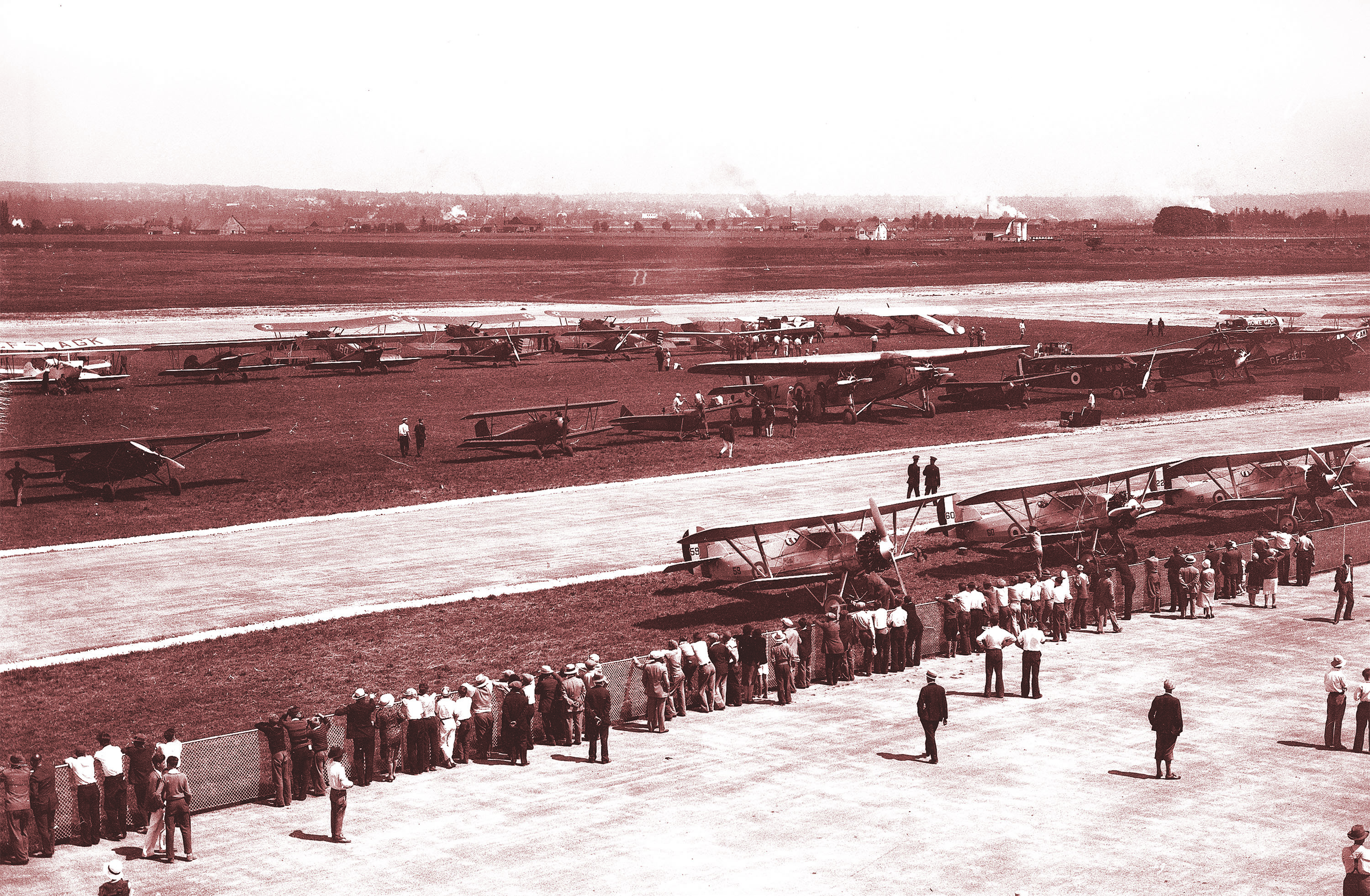
![]() You could possibly blame the creation of Vancouver Airport on a snide comment by world renowned aviator Charles Lindbergh. In 1927, Charles Lindbergh turned up his nose at an invitation to include Vancouver in his North American tour to mark his epic New York to Paris flight because ‘there was no field fit to land on’. But there is more to it……….
You could possibly blame the creation of Vancouver Airport on a snide comment by world renowned aviator Charles Lindbergh. In 1927, Charles Lindbergh turned up his nose at an invitation to include Vancouver in his North American tour to mark his epic New York to Paris flight because ‘there was no field fit to land on’. But there is more to it……….
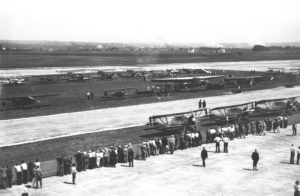
![]()
The city of Vancouver purchased land on Sea Island for aviation purposes, to replace its original grass Aero-club airstrip at Minoru Park. Construction began in April 1930 on a single, 730-metre runway and a small wood-frame administration building crowned by a control tower.
Back in 1927, the government of Canada had signed an Order-in-Council to develop flying clubs. These clubs needed at least 30 members who were either already licensed pilots or interested in becoming trained as pilots. The members were required to invest in an aerodrome and workshop area and, in return for this investment, would receive two light aircraft.
Not surprisingly, the plan was met with considerable enthusiasm from the Canadian flying public. To promote the clubs and to increase the interest in aviation, clubs began hosting “Air Pageants” – with aerobatic displays and offering ‘barn storming’ rides. One of the major events was the Trans-Canada Air Pageant. It spanned the period July to September of 1931. Pilots from the Royal Canadian Air Force and from various flying clubs flew across Canada providing aerial shows to nearly one-third of a million members of the public.
Vancouver promised the Aero Club that they would be ready so on July 22, 1931, Vancouver Airport officially opened its doors, boasting the first hard-surfaced runway in Canada. During the 1930s the airlines operating at the airport included Canadian Airways, Wells Air Transport, Alaska Washington Airways, United Airlines and Trans Canada Airlines.
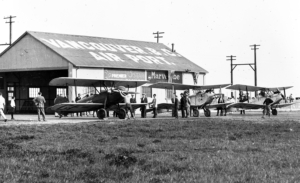
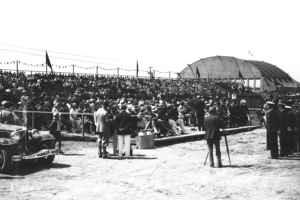
The Aero Club’s Beginnings
In the early 1920’s, Royal Flying Corps and the Royal Air Force veterans met socially from time to time in the Vancouver area, but attempts to form a permanent organization did not crystallize until April 1, 1924, when the Air Force Club of B.C. was formed with Major A.D. Bell-Irving as president. Members of the club got in little flying time as the club did not own an airplane. The club was reorganized in December 1927, as the Aero Club of British Columbia (Vancouver Branch).
Following the club’s formation, the club received a De Havilland moth from the Department of National Defense on the understanding that the club would provide a surety bond for $10,000. The bond was guaranteed by General J.W. Stewart and H.O. Bell-Irving. At this time, the club also acquired another DH moth. These two aircraft, G-CAKH and G- CAKK , of wood and fabric construction were in constant use until 1930 when they were replaced by two Fleet biplanes of metal construction and fabric covered. At about the same time as the Moths were acquired, the club had obtained two Eagle rock biplanes. The Fleet airplanes and two or three other Fleets subsequently added to the club’s stable of aircraft and had an active career over the next decade. They proved to be very sturdy and were considered ideal training airplanes.
The Trans-Canada Air Pageant in the Okanagan
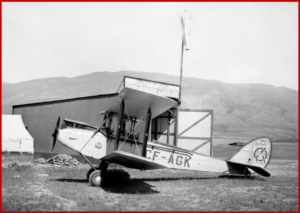
The earliest community airport in the Thompson-Okanagan was at Vernon, B.C. In 1929, The Vernon City Council put forward a bylaw for the purchase of land for an airfield. $4500 was put aside for land on Mission Hill, where the army camp is today, to construct a runway. The Department of Air Transport awarded a license on February 10th, 1930.
The only problem was the highway to the south. That was quickly alleviated by the Provincial MLA K.C. McDonald who assisted in moving the road away from the hazard area.
Soon after the completion of the airfield, the local Board of Trade made plans for an air show. The Vancouver International Airport was to open in July and information came to Vernon that the Trans-Canada Air Pageant and the Aero Club of B.C. would land in Vernon on July 7th, 1931. When over 20 planes landed for refueling and a little barnstorming for cash, the pilots were canvassed by early Vernon fliers, Fred Galbraith and Lowell Dunsmore to sign up for a long-distance air race and events at the strip. Almost all of the Aero Club members agreed to come back.
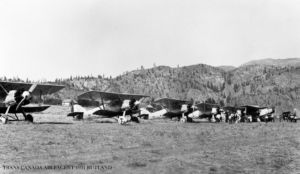
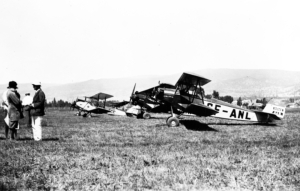
After fueling and thrilling the crowd in Vernon with barnstorming, the pilots took off for the Rutland airstrip and did it all over again.
Cliff Renfrew and a few others had formed an aero club in Rutland in 1928, and had several Gypsy Moths flying at this time. The Air Pageant was well received by hundreds of locals excited to view and fly.
Four pilots flew as far as Penticton and landed in the field west of town. Two went as far as Oliver but did not land for some reason. It was a thrill nevertheless.
Vernon Air Races
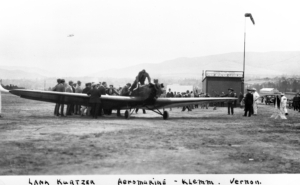
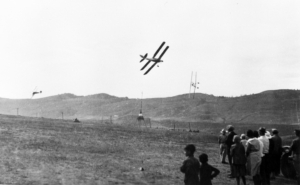
With the success of the Pageant, the Board of Trade set in motion plans for a major event to include air races for September 30th and October 1st.
The Long-distance race began in Vancouver in the morning and was won by lone woman flyer Lana Kurtzer of Seattle, in her Aeromarine-Klem mono-plane. A total of 19 aircraft arrived that day to the delight of the entire population.
The success of the air show and its events of pylon races, balloon bursting, bombing, dogfighting, parachute drops and much more, was so huge that the event was held over until the 4th.
